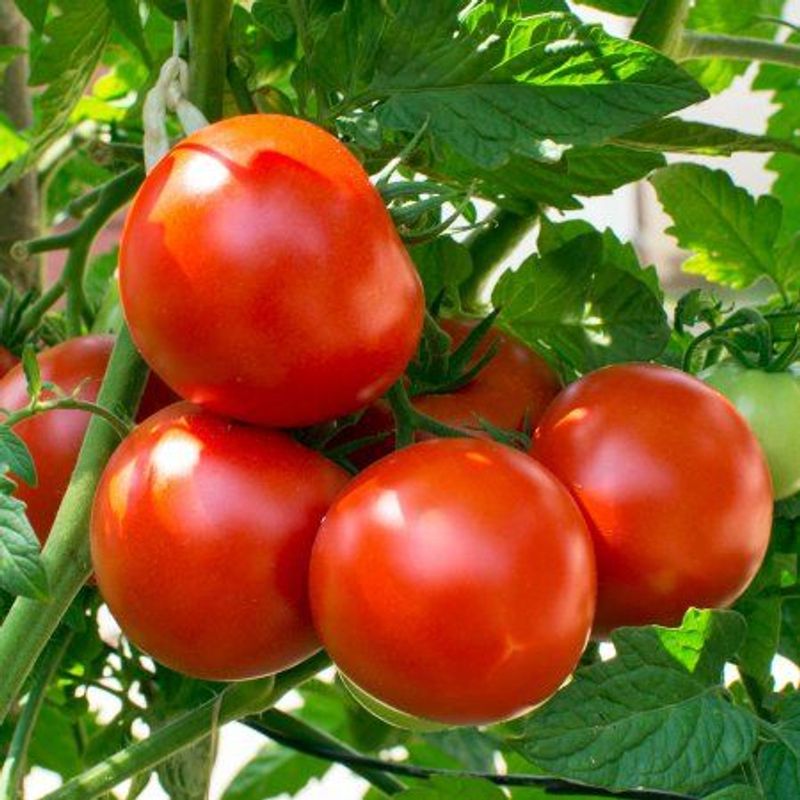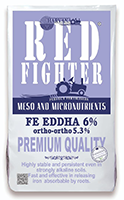Tomato Growing Guide

Climatic (Environmental) and Soil requirements
TEMPERATURE
Optimum soil temperature for processing tomato’s growth is 23°C during the day and 15°C at night:
flowering is scarce with air temperature above 33°C and vegetative activity stops above 35°C.
The optimum air temperature for fruit ripening is about 26°C during the day and 18°C at night. Lycopene (the red pigment of which fruits are rich) production stops above 30°C.
SOIL
Tomatoes can be produced on a variety of soil types. Obviously, they grow optimally in deep, medium textured sandy loam or loamy, fertile, well-drained soils. Avoid sites that tend to stay wet and are subject to ponding. Leveling of fields is highly recommended, not only for planting but also for easy harvesting. In field production, plants depend on the soil for physical support and anchorage, nutrients and water. The degree to which the soil adequately provides these three factors depends upon topography, soil type, soil structure and soil management. Optimum pH is 6.8, the growth is scarce with pH above 8. Compaction pans are present in many soils. They are formed mainly, but not only, by machinery and implements traffic and are normally located at or just below plow depths. Although compaction pans may be only a few inches thick, their inhibitory effects on root growth can significantly reduce tomato yields. A good seed bed is important because plant roots require water and oxygen from the soil pore space. A good seed bed is defined as:
• smooth and level seed bed, without large clods and weeds
• good soil tilth, soft structure of seedbed and more firm deeper
The right soil-air-water balance helps limit plant stress during drought periods and enables the plant to fully explore the soil profile for nutrients. Plants are able to use water efficiently and grow strong roots for good anchorage. At the end tomato, both planted and transplanted needs a very smooth seedbed.
Tillage
Primary and Secondary
For tomato production, proper tillage is crucial for quick and uniform establishment of the crop in initial stages of growth, proper crop stand and thus optimal yields. Land preparation should involve enough tillage operations to get fine soil particles and make the soil suitable for seedlings or transplants establishment, providing the best soil structure for root growth and development. In areas where winter is cold, primary tillage must be carried out at fall. Tilled soil winters in cold conditions and clods are sized by frost in an optimal way. Tillage and preparation can take substantial time and wintering of the fields helps to get proper soil tilth, specially in heavy soils, thus decreasing the tillage passages in spring. Moldboard plows are currently the main tool for primary tillage. Tillage systems using the moldboard plow prepare the greatest soft soil volume for vigorous root growth. Fine particles and aggregates of soil allow the development of more extensive root systems, which can more efficiently access nutrients and water in the soil. Disking after moldboard plowing tends to re compact the soil and should be avoided.
Primary Tillage
A Disk Ripper is an alternative to plough, destroying compaction and hard pans. If a compaction pan exists just below or near mold-board plow depth, this hard pan can be disrupted by sub soiling to a depth of 16 to 18 inches to allow the development of a more extensive root system. Sub soiling also helps increase water infiltration.
Disk rippers can be used as an alternative, for primary tillage especially where hard pan exists or ponding is a problem. Development of root system is influenced by the soil profile. Root growth will be restricted if there is a hard pan, compacted layer or heavy clay zone. Tomatoes is a deep rooted plant and, under favorable conditions, some roots will
grow to a depth of as much as 10 feet. The majority of roots, however, will be in the upper 12 to 24 inches of soil. Since root development is severely limited by compacted soil, proper land preparation should eliminate or significantly reduce soil compaction and hard pans. Secondary tillage is carried out before planting in spring. The goal is to achieve a proper seedbed, which means soil particles of right size for good contact between transplants roots or seeds. Large clods can cause a bad soil to roots contact, so that transplanting machinery does not perform in a proper way. Summer or fall ploughing is still the most viable option for tomato cropping. In heavy soils, working depth can reach 40 centimeters. Also Chisel Plows can be applied as an alternative to moulboard ploughs and disk rippers.
Crop Protection
Crop protection is of paramount importance, because processing tomato is used to produce human food and the quality of fruit is crucial to get good price for the product. Diseases, insects, and weeds are serious competitors for crop, and spraying is needed on a regular basis. Weeds and/or pest can damage the yield up to the 100%, if not controlled or controlled too late. weed control is carried out both with pre-planting (or transplanting), pre-emergence and post emergence (on-top spraying). In pre-emergence, herbicide of total action can be used (glyphosate and similar). In post emergence, residual herbicides are used against broadleaves weeds and graminicides are used against grasses. Weeds also make difficult mechanical harvesting. Tomato is not a strong competitor against weeds and many weeds can grow taller than the crop. Because weeds can become taller than the crop, tomato is more susceptible to yield losses due to weed competition compared to other high-canopy crops. Weeds losses from direct competition are only part
of the problems that may be caused by weeds. Weeds as a rule also: 1. produce seed that increases future weed problems 2. act as co-hosts for insects and diseases 3. increase tillage needed for weed control. Insect and diseases control also is carried out by spraying the fields with proper chemicals. For fungi diseases, a spraying is scheduled each 10-15 days. Eradication (systemic) and contact fungicides are alternatively applied.
Higher working pressures are required in order to penetrate the crop canopy. In certain areas, ripening chemicals are applied in order to speed up and make uniform the ripening process.





